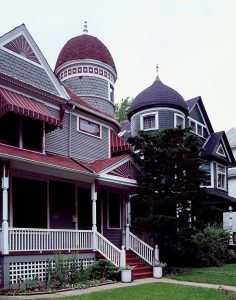Let’s explore the different shapes that people use to build the buildings that we live and play in! Look at all the right angles in the room that you’re sitting in now or a building that you’re looking at. Have you ever seen a building that has curved walls or ceilings? Why would an architect choose one shape for a wall over another? Check out these books and activities recommended by librarian Mary Gen from Kelly Branch.
As you read Which One Doesn't Belong?, decide which shape you think doesn't belong in the group.
Shapes in Math, Science and Nature includes great sections about “living in” squares and circles.
Hamster Champs introduces the concept of angles as three race car-loving hamsters try to escape the pesky housecat. How big of a ramp do they need to get away the fastest?
For more on what a right angle is, read Lines, Segments, Rays, and Angles.
Let's try some activities!
Use craft sticks to make your own angle sticks. (You can just create the angles on a table; they don't have to stick to each other.) Take time to explore the right angles that make up our homes. Talk about right angles and how many you can see from where you are. Why do you think so many right angles are used in architecture today? Have you ever seen a building that doesn’t use right angles in its design? Have you ever seen a circular room? Circular ceiling? Triangular room?
Look at images of Marina City or videos of Marina City (i.e. “the corncobs”) in downtown Chicago, along with other buildings with curved angles, and think about design without right angles. What do you notice? What do you like or dislike about these buildings? Why do you think Bertrand Goldberg designed them with curved lines? Talk about whether you have ever seen right angles in nature. (This is not likely!)
Ready for a challenge? Design your own building without right angles! Supplies you could use include: toilet paper tubes, egg cartons, construction paper, markers, colored pencils, scissors, glue and tape. Look for simple items you have around the house without natural right angles. Then, come up with a design for a building (house, apartment building, school, library, etc.) without using any right angles. Cut cardboard tubes and egg cartons as necessary for your design. Think outside the box!
Reflect on Your Learning
- What would be difficult about constructing a building with curved walls? (Try to get kids thinking about building materials and tools that might already be pre-configured to work best with right angles. Talk about carpenters squares, rulers, levels, tiles, hardwood flooring, etc.)
- What would make life easier if you lived in a round house? What would be more difficult?




Add a comment to: The Shapes We Live In: Math Fun for Kids